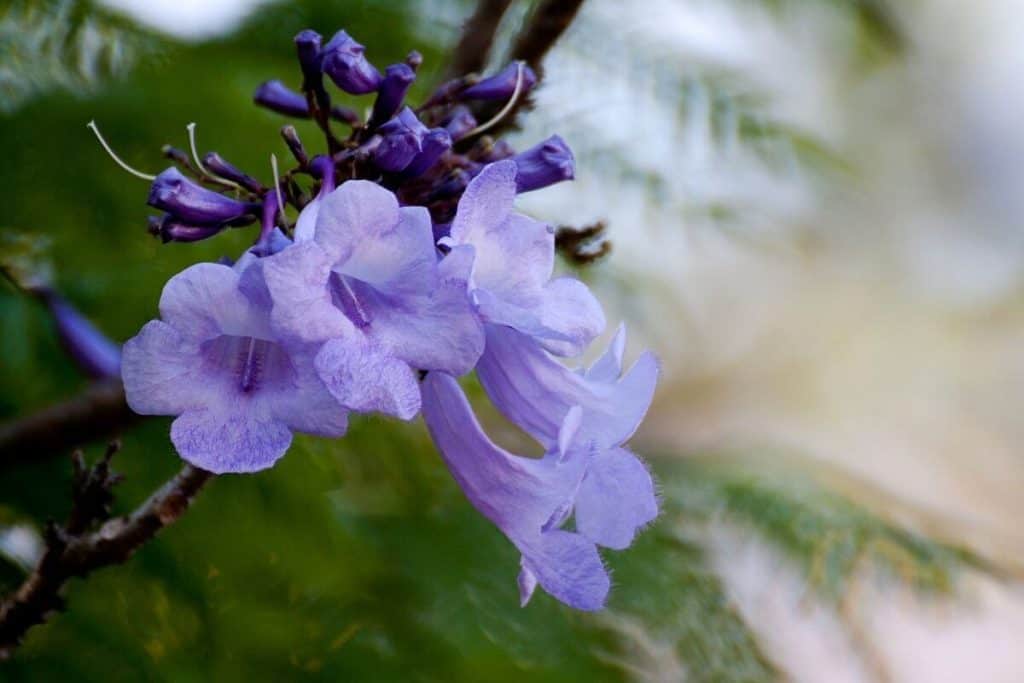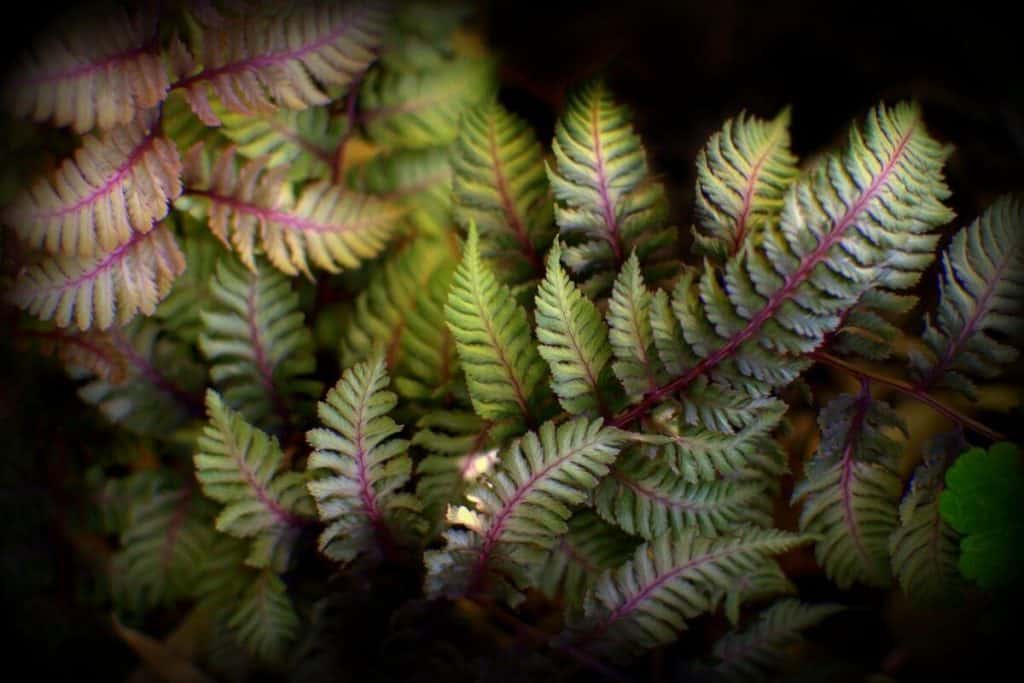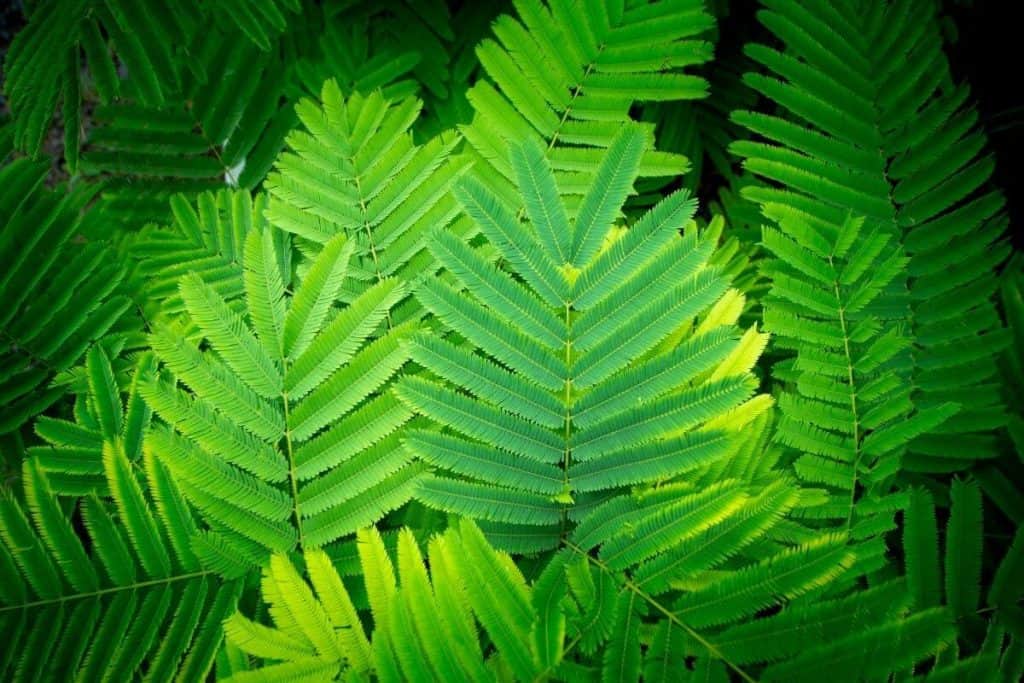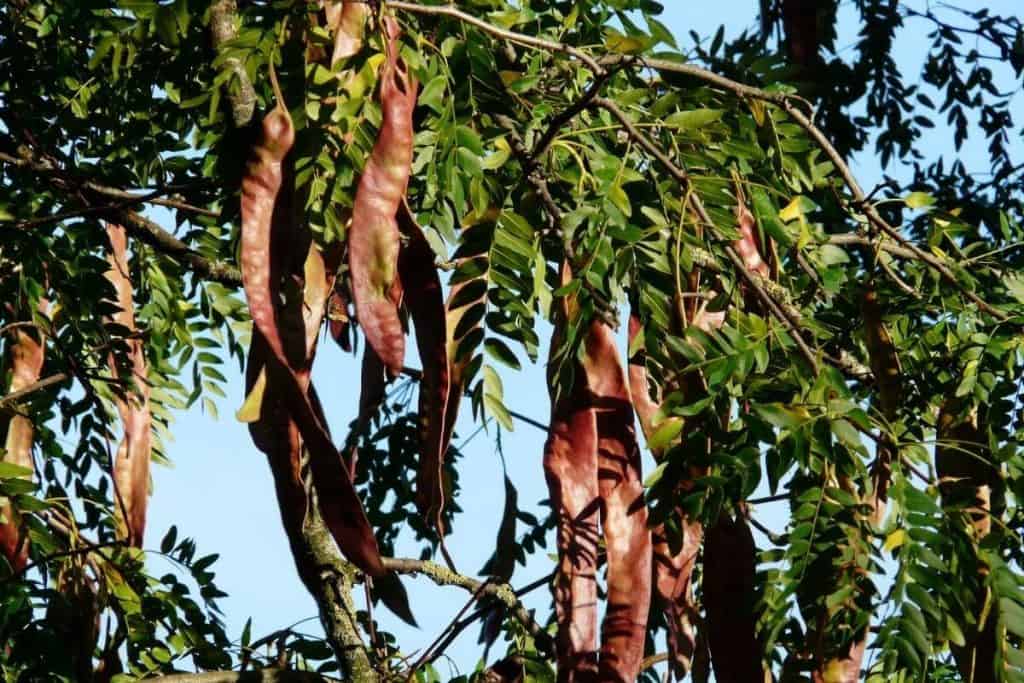Fern is a class of nonflowering vascular plant from the Polypodiopsida family, consisting of true roots, stems, and complex and decorative leaves.
A fern reproduces by spores – and it constitutes an ancient division of vascular plants, with some as old as the Carboniferous Period, at about 359 years ago or older.
There are several trees with fern-like leaves out there, and just like fern is very diverse in its general features, including size, form, habitat, reproductive system, etc., so are these trees.
Some of the most popular trees that have fern-like leaves include Jacaranda, Royal Poinciana, Velvet Mesquite tree, etc. We'd be highlighting them to give you a better understanding of how they are.
Table of Contents
Trees with Fern-Like Leaves
1. Jacaranda Tree (Jacaranda Mimosifolia)

The Jacaranda is a species of flowering tree indigenous to South America that has fern-like leaves.
It has other names that include the fern tree, blue Jacaranda, purple panic, black poui, and the exam tree, amongst others depending on its habitat or the name its planters decide to call it.
The South American countries from which these trees are commonly seen include the likes of Argentina, Brazil, and Bolivia.
However, they have wildly become sold and even planted in many other countries with suitable climatic conditions (warm climates).
The main reason behind its popularity is its beautiful violet flowers that grow during the spring and early summer seasons, which can last for virtually two months. Again, aside from the flowers, the Jacaranda trees attract with their exotic-looking foliage.
Generally, the Jacaranda variety possesses leaves that are the same as that of the fern species. The Jacaranda is primarily used for beautifying purposes and is most commonly grown on the roadsides.
However, because trees grow fast, in the appropriate conditions adding up to 120 inches (3 m) a year in their early stages, and because they can out-compete the native species, they have been included in the list of invasive species in parts of South Africa and Australia.
Related Post: Blue Star Creeper Care
2. Royal Poinciana Tree (Delonix regia)

The Royal Poinciana is another tree species with fern-like leaves native to Madagascar. It has other names such as royal Poinciana, flamboyant tree, flame tree, or forest flame.
Despite being risked in the jungle, many of its specimens are still widely grown as ornamental trees, preventing these species from becoming extinct.
Also, the Royal Poinciana continually looks fresh and renewing in several climates. However, in areas with mildly cool winters or long periods of drought, its leaves are prone to many fall-offs.
Another notable feature of these plants is that, as an adult tree, it can grow up to a height of over 40 feet (12 m).
There's this generous crown they possess which they develop, which is clearly why the plant is always used as a tree for shading and consistently grown close to places where animals graze.
Again, the Royal Poinciana, like we earlier mentioned, possesses fern-like leaves that are green-colored and develop lots of orange to red flowers.
However, the tree has a verity known as "flavida," which owns yellow color flowers. They may have different flowering seasons depending on the climate of that area.
Related Post: Best Tree Identification Apps
3. Velvet Mesquite Tree (Prosopis velutina)

The Velvet Mesquite Tree features a small to medium-sized species of trees native to the deserts in North America and thrives in arid climates. It is scientifically called the Prosopis velutina.
Despite being regarded as potential invaders, and disastrous plants, especially to native crops when grown outside their natural habitat, and considered noxious weeds as in most areas, the Velvet Mesquite still plays a significant role in their native ecosystems.
This tree variety can potentially grow up to a height of typically 30 to 50 feet (9–15 m) tall and features deep roots and thorns at the base of the little branches.
They can equally be easily recognized by their fern-like leaves and possess long stems and round compound leaflets covered with fine hairs.
During spring seasons, the Prosopis velutina produces yellow-colored flowers that grow in dense cylindrical clusters and subsequently metamorphose into long seed pods, thus providing a food source for many animal species.
Meanwhile, animals are also significant in the spreading of their seeds.
4. Japanese Fern Tree (Filicium Decipiens)

Filicium Decipiens is a small to medium-sized ornamental species of trees with dense foliage and fern-like leaves with bright-green colors.
As much as this variety is commonly called Japanese Fern Trees, you cannot classify them as ferns; neither are they indigenous to Japan. However, they originated from parts of East Africa and South Asia.
Due to the easy-maintenance factor and its significance in landscaping functions, the tree is in high demand.
Another remarkable feature is that it possesses dense foliage with an exotic appearance and a crown that naturally maintains a relatively oval and attractive shape.
Unlike other ornamental shrub species of similar resemblance, the Japanese Fern Tree doesn't require seasonal pruning. Again, the trees are usually grown for their foliage, yet they produce flowers annually.
Its flowers are generally smallish, white, and grow in loose clusters and would subsequently develop and metamorphose into some tiny, purple, inedible berries.
Meanwhile, the fruits will leave stains on the pavers and sidewalks around the trees after they drop, which could make so many of its planters annoyed and frustrated, as it will require regular cleaning.
Related Post: Bottle Brush Tree Care
5. Fern-Leave Wattle Tree (Acacia Filicifolia)

This particular tree species is not too different from ferns. Widely called It is Fern-Leaved Wattle, it can be typically be seen growing by the roadsides on the coasts and tablelands of New South Wales, Australia. Its shrubs can grow as high as 10 to 50 feet (3 to14 m).
The structure of its branches is almost the same as that of ferns and possesses bipinnate leaves. From July to October, these trees develop yellow-colored flowers, which subsequently mature into dark brown pods.
The Fern-Leave Wattle has a rapid growth rate yet has a relatively short lifespan of about 25 years.
6. The Honey Locust Tree (Gleditsia Triacanthos)

The Honey Locust species of tree is native to central North America. However, due to its adaptability, it has been recommended and adopted in several other places worldwide.
Popularly called the honey locust, thorny honey-locust, or thorny locust, it got its name from the sweet taste of the pulp of its legumes, which is a source of food for livestock and wildlife.
Its shrubs can attain a maximum height of 66 to 98 feet (20 to 30 m) and have a medium-to-long life span. In its best and most favorable condition, its life cycle can extend up to 120 years.
The Honey Locust species are commonly known for their ornamental purposes in several parts of the world. They are also exceptional shading trees due to their dense foliage.
Other notable features are rapid growth, adaptability to several soils, high drought tolerance, and faster recovery after transplanting.
Honey Locust branches feature dense clusters of thorns which functions as a defense system against herbivores. They possess fern-like leaves with bright-green leaflets, bipinnately on young trees and pinnately compound on older specimens.
Although these trees provide food for some species of animals, due to their rapid spread and accelerated growth, they are also seen as invading species in several world regions.
Related Post: Types Of Ginkgo Trees




